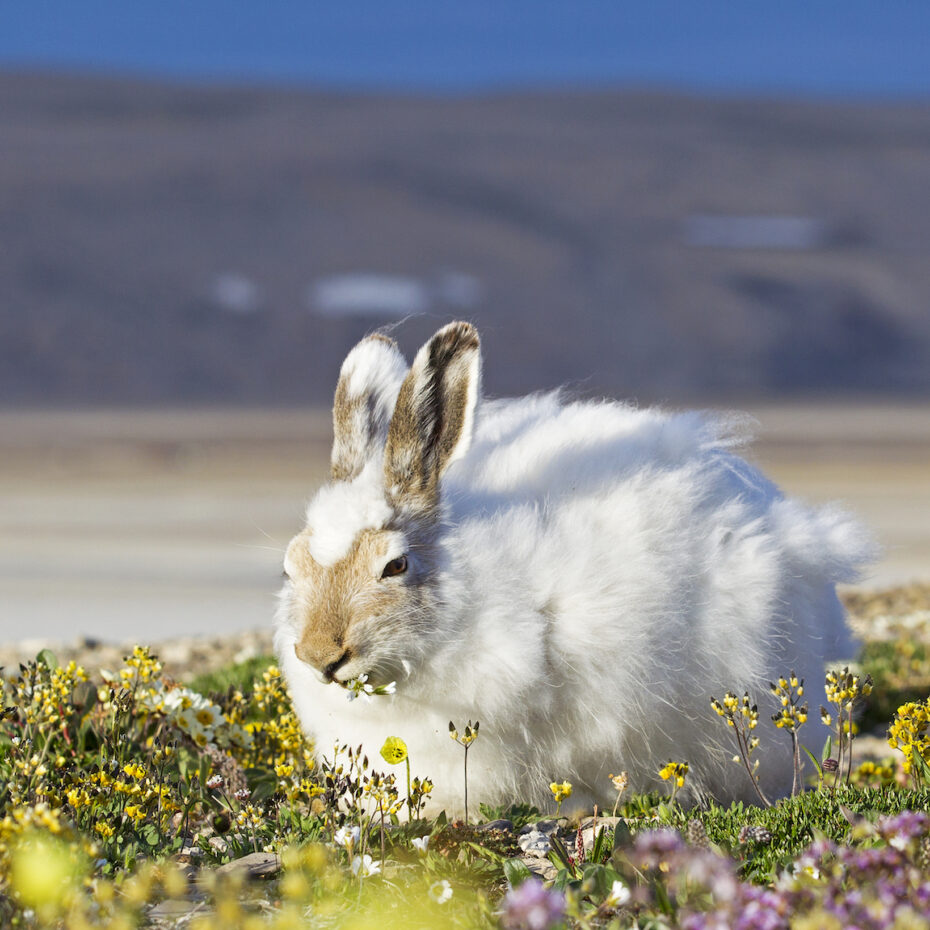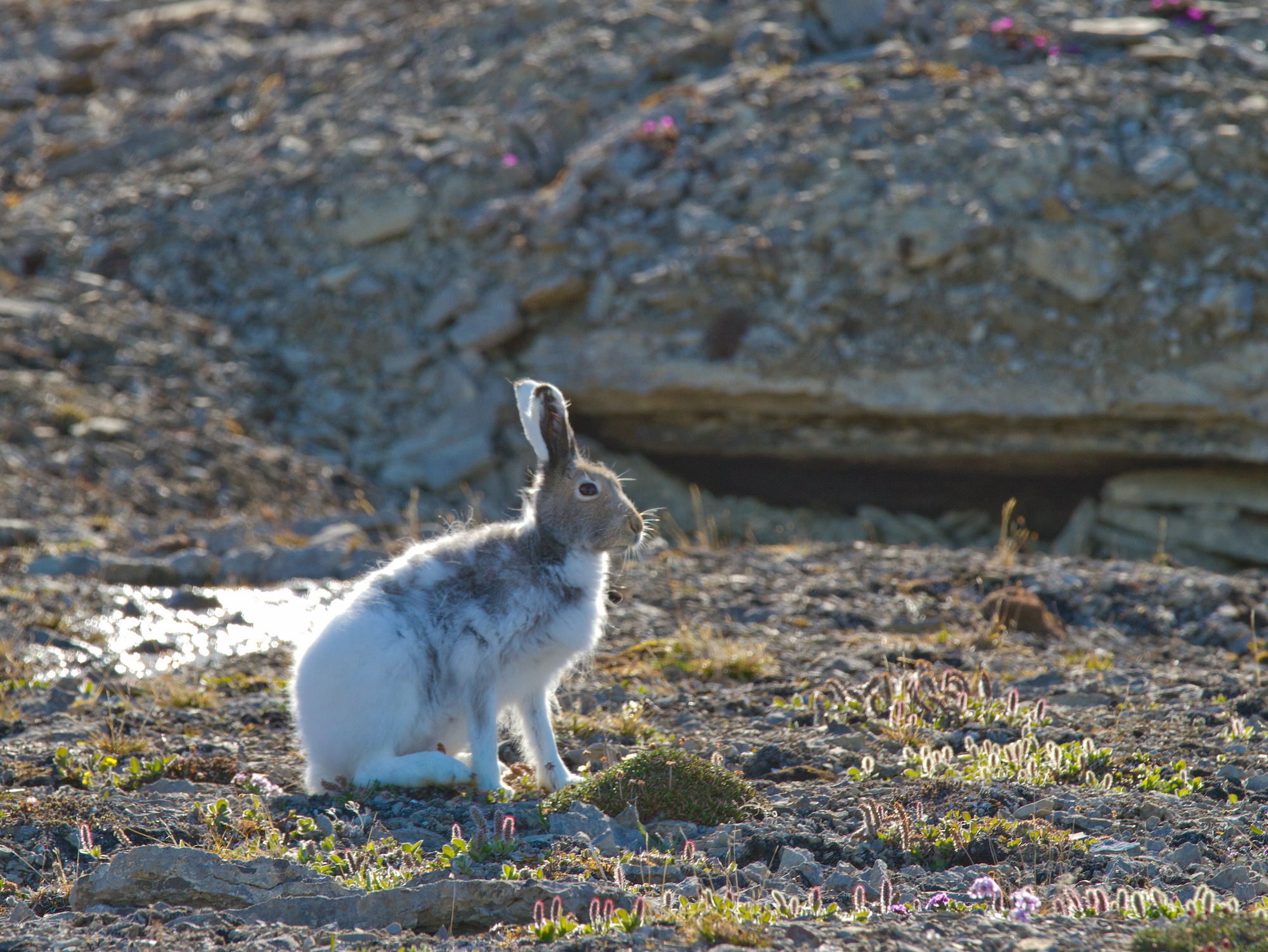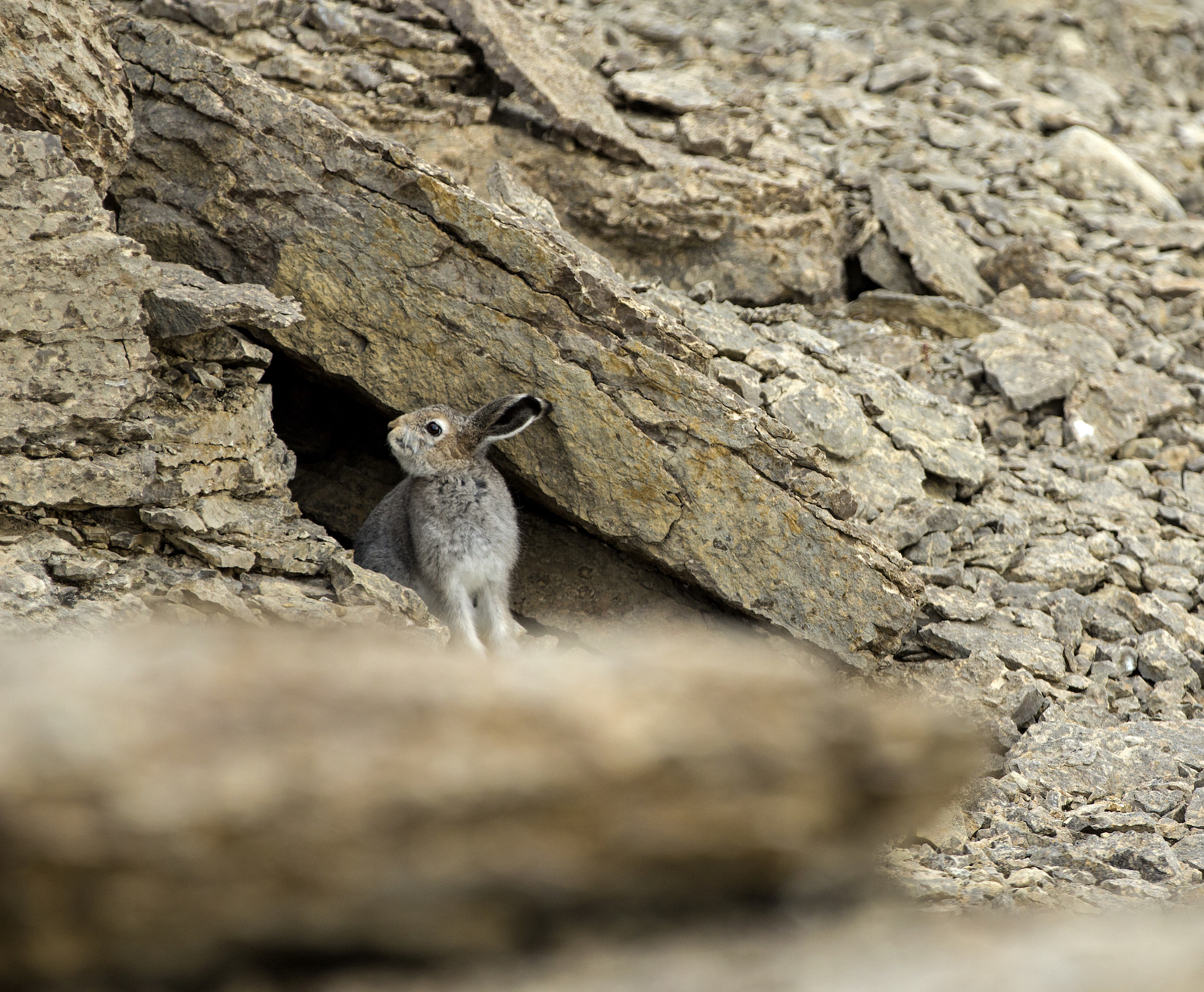
March 02, 2022 | Ellesmere Island & Arctic Watch
ARCTIC HARE COMPLETES EPIC 388KM JOURNEY
Arctic hares can hop quick - but over huge distances?
A new study published shows how one hare travelled 388km over the course of seven weeks.
Published and shared in science news - mammalian ecologist Dominque Berteaux of the Université du Québec wanted to better understand how these mammals move across the polar landscape. The study focused on 25 hares tagged with satellite collars on Ellesmere Island in the Canadian high Arctic.
The typical patterns for hares and their relatives (lagomorphs) is to inhabit a familiar territory over the course of their existence where food is plentiful. This is clearly not the case for these expeditionary bunnies - the average distance travelled was between 180km and 300km. The individual known as BBYY travelled 388km over seven weeks.
While one assumes that BBYY travelled for food, one of the most interesting aspects was that this animal would have had to find food, without effectively becoming food over such a large area.

Arctic hares are a key participant to the arctic ecosystem and food chain. A delicious meal for arctic wolves, arctic foxes and raptors such as snowy owls, arctic hares will tend to inhabit scree slopes and steeper areas nearby grassy foraging sites. A hare's excrement, is an important source of fertilizer for high Arctic flora. An arctic hare can grow to about 7kg and 70cm (tail excluded). In the winter months, hares can group up in valleys and wind sheltered areas to avoid predators (safety in numbers?).
This great video captured by BBC shows an arctic wolf TRYING to hunting hares:
An arctic hare's powerful legs and uncanny agility is their greatest strength - they'll pivot and move extremely fast over rough terrain to avoid predators.
An arctic hare's diet consists of flora - think small arctic flowers (arctic poppies, saxifrage, etc), grasses on the tundra, arctic willow seeds and more. We regularly see arctic hares across the High Arctic on our journeys - from the immediate surroundings of Arctic Watch, Somerset island, to areas such as Ellesmere Island, Devon Island and Axel Heiberg.

Arctic hares will turn completely white in winter. During the summer months, Arctic hares will shed their white fur, to grow a brown/grey coat with (at times), patches of white.
An Arctic hare is relatively easy to photograph - with patience, a photographer can obtain some great images. We recommend using lenses such as a 70-200m and/or a 400mm (do not use photographic drones - they are very sensitive to them).
We're here to help.
We understand that booking a trip like this is a big endeavour. Please reach out to us with any questions that you might have regarding your upcoming adventure.



